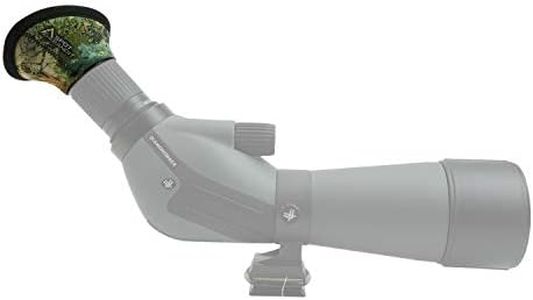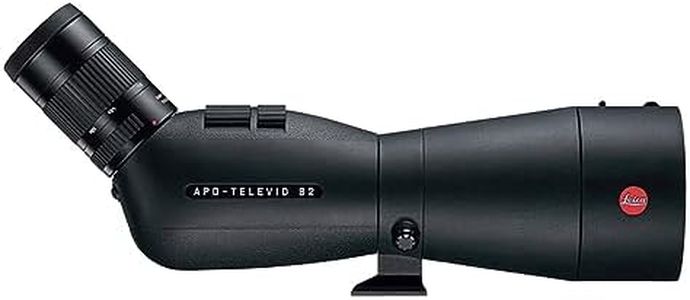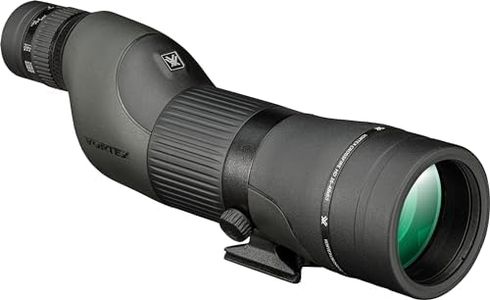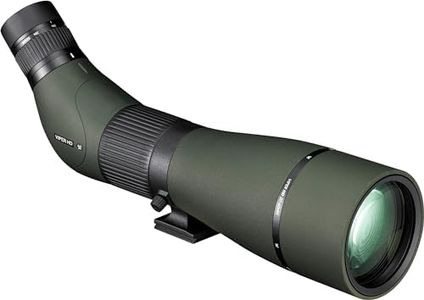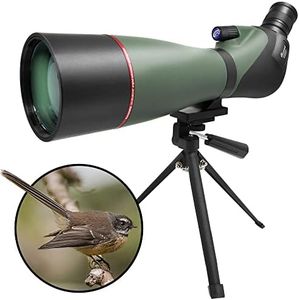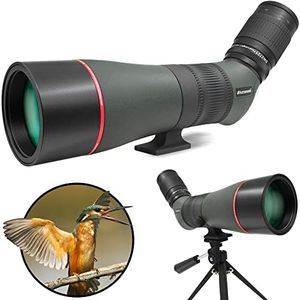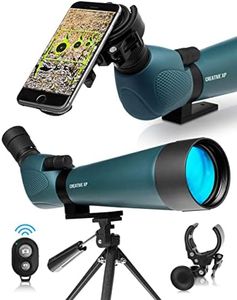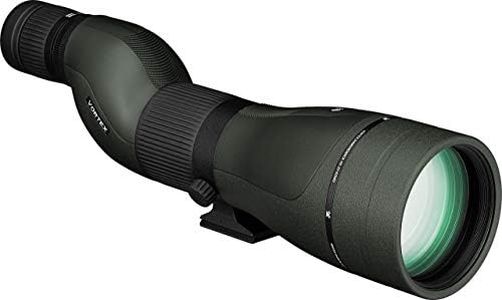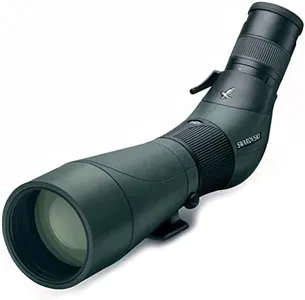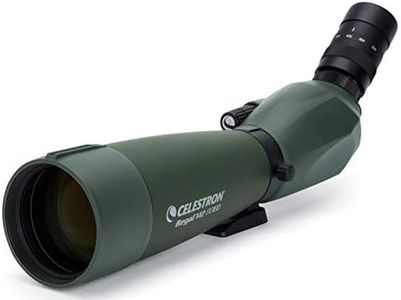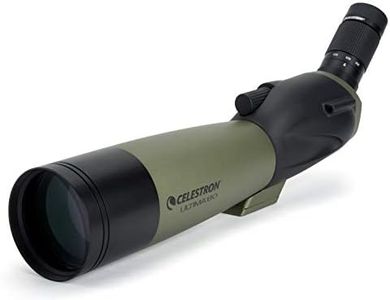Buying Guide for the Best Birds Spotting Scopes
Choosing the right bird-spotting scope can greatly enhance your bird-watching experience. A spotting scope allows you to see birds in great detail from a distance, making it easier to identify species and observe their behavior. When selecting a scope, consider factors such as magnification, objective lens size, field of view, and portability. Understanding these key specifications will help you find a scope that best fits your needs and preferences.MagnificationMagnification refers to how much closer the scope can make distant objects appear. This is important because higher magnification allows you to see birds in greater detail. Spotting scopes typically offer magnification ranges from 15x to 60x. Lower magnification (15x-30x) is suitable for general bird watching and provides a wider field of view, making it easier to locate birds. Higher magnification (30x-60x) is ideal for observing fine details but may require a tripod for stability. Choose a magnification range based on your bird-watching habits and the level of detail you wish to see.
Objective Lens SizeThe objective lens size is the diameter of the front lens of the scope, measured in millimeters. This spec is important because larger lenses gather more light, providing brighter and clearer images, especially in low-light conditions. Common sizes range from 50mm to 100mm. Smaller lenses (50mm-60mm) are more portable and lightweight, making them easier to carry on long hikes. Larger lenses (80mm-100mm) offer better image quality but are bulkier. Consider where and when you will be using the scope to determine the best lens size for you.
Field of ViewField of view (FOV) is the width of the area visible through the scope at a specific distance, usually measured in feet at 1000 yards. A wider field of view allows you to see more of the landscape and makes it easier to spot moving birds. Scopes with a narrow field of view provide more detailed images but require more precise aiming. If you plan to watch birds in open areas or track fast-moving species, a wider field of view (100-150 feet at 1000 yards) is beneficial. For stationary bird watching or detailed observation, a narrower field of view (50-100 feet at 1000 yards) may be preferable.
PortabilityPortability refers to how easy it is to carry and transport the scope. This is important for bird watchers who travel frequently or hike long distances. Factors affecting portability include the weight and size of the scope, as well as the design of the carrying case. Lightweight scopes (under 2 pounds) are easier to carry but may have smaller lenses and lower magnification. Heavier scopes (over 4 pounds) offer better image quality but can be cumbersome. Consider your mobility and how often you will be moving the scope to choose the right balance between portability and performance.
Eye ReliefEye relief is the distance between your eye and the eyepiece where you can still see the full field of view. This spec is important for comfort, especially if you wear glasses. Longer eye relief (15-20mm) allows you to view comfortably without straining your eyes or removing your glasses. Shorter eye relief (10-15mm) may require you to position your eye closer to the eyepiece, which can be uncomfortable during extended use. If you wear glasses or plan to use the scope for long periods, look for a scope with longer eye relief.

